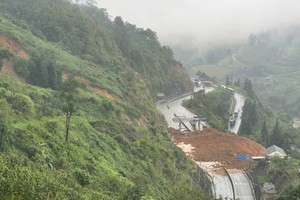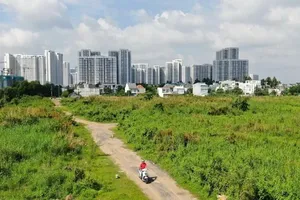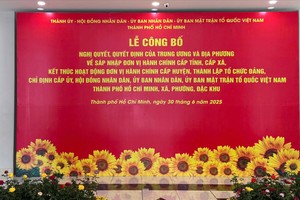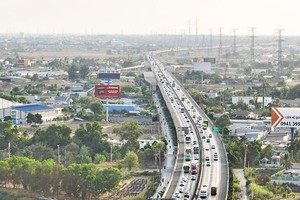The relentless hot weather of the recent months has put thousands of hectares under grave threat of forest fires in the Mekong Delta. Many rangers had to forgo a Tet holiday with their families and spend it in the forest, but they do not begrudge the sacrifice.
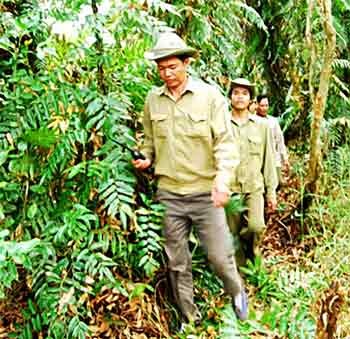
Bay Nui, the group of seven mountains in the Mekong Delta province of An Giang, has been living in drought conditions for the last four months. The prolonged hot weather has caused rivers to run dry and streams normally flowing around the mountains of Dai, Co To and Cam have not been seen this season. No water, and the forests are no longer green. Many parts have already withered and turned yellow.
According to An Giang Province’s Forest Protection Department, this dry season poses great danger to the forests. About 6,800 hectares of the total 12,177 have been listed as being at high risk. In addition, 21,000 hectares of the U Minh Ha National Park are about to dry up. Among this, 3,000 hectares have been put on red alert for forest fires.
Tran Phu Hoa, Vice Director of the Department, said: “To prevent the forest fires or at least minimize the damage if they occur, we have already arranged for our employees to protect the forest 24/24 since the first day of the Lunar New Year.”
Due to the dangerous situation, the Forest Protection Office in An Giang’s Tri Ton District had a few employees set up a station on the To Mountain. This is expected to increase the efficiency and effectiveness of protection work at four wards – Co To, O Lam, An Tuc and Nui To.
Pong Tok, Party cell secretary of Phuoc Loi Village in O Lam ward, said: “During the Tet holidays, we were still broadcasting fire alerts and details of fire prevention measures on the radio. The information was given in two languages, Vietnamese and Khmer. We also had some night watchmen join the forest protection team.”
Meanwhile, Hua Minh Khoa, head of the Luong Phi Station, listed some of the most dangerous zones, including the forests from Da Bia Hill to Bung Ong Dia Cave, Da Bac Hill, and the mountains of Thalot and Nam Quy. He said his employees in recent days have had to bear a huge workload from early in the day to late in the evening They’ve had to move between mountains, no matter how far and how difficult it was to walk on the rocky path. Their morning starts at a top of a mountain and ends at the top of another. Eating, drinking and any relaxation they get have to wait until very late in the night, back at their camp.
“However, this year, we have some back-up. Militiamen. Thanks to their help, our work burden is somewhat relieved,” Khoa told SGGP.
This welcome respite does not mean, however, that foresters get better living and working conditions. They have to live in a watchtower with a floor of leaves or straw, and no other facilities. The schedule is not easy either, but these are conditions that every forester has to accept.
The reward they most desire and cherish for their hard work is a green forest.
Station head Pham Van Det of the U Minh Ha National Park, who has worked for 20 years as forester, said: “20 years of living in the forests, 20 years of celebrating Tet in the forests; I am used to it now, and somehow find some excitement from it. In my early days on this job, my relatives advised me to find other work, worried that I would not be able to bear it. But that advice did not work on me. Every time I see a green forest, I cannot resist its beauty or leave it alone.”



